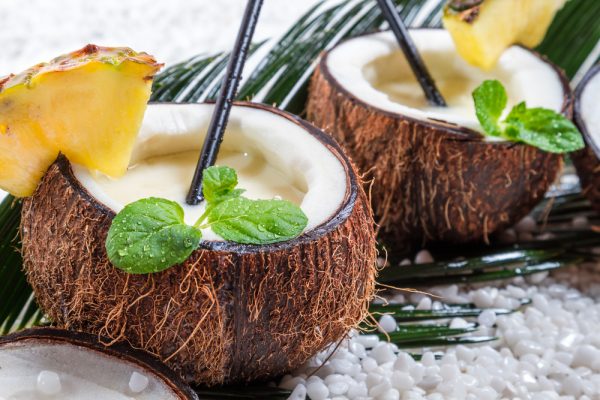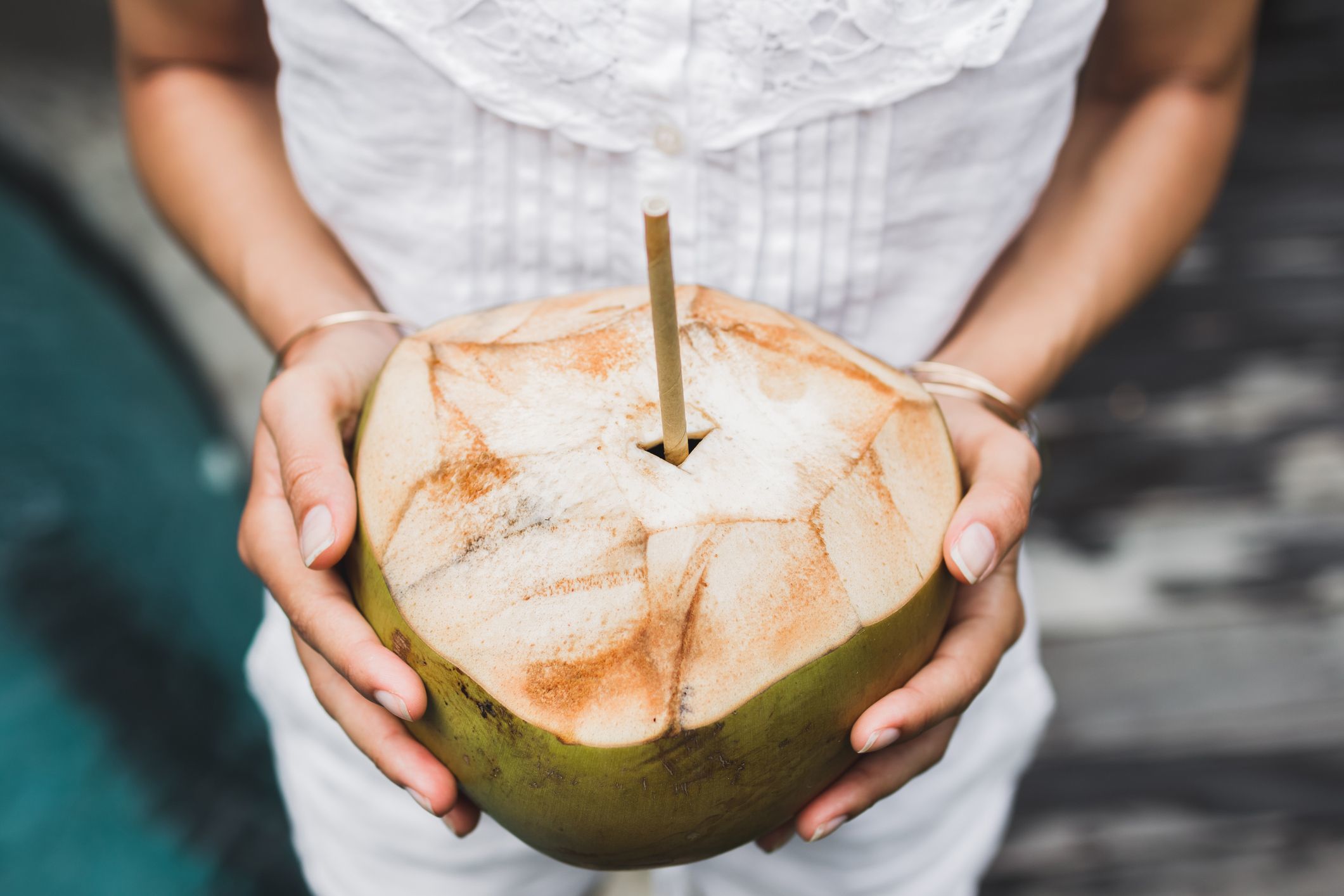When you close your eyes and picture your upcoming vacation at Koloa Landing Resort, the image probably includes spectacular tropical sunsets, sipping Hawaiian tropical drinks on the beach and coconut palms waving in the breeze. But there’s more to coconuts than just a scenic setting and a culinary ingredient; the history of the coconut tree ties into the entire culture of the Hawaiian islands.
The Origins of the Coconut Palm
The Hawaiian Coconut Palm tree is highly revered and respected. It’s technically called the Arecacea or Palmae by some botanists, but its actual name is Cocos nucifera L. While coconuts grow throughout Hawaii — and in tropical locations around the world — the plant didn’t originate here. Instead, coconut plants were first cultivated in two separate places, which makes the coconuts found on islands in the Pacific Ocean different from those found on islands in the Indian Ocean. Pacific Ocean coconuts, the kind found in Hawaii today, developed in Southeast Asia, probably in Indonesia, Malaysia and the Philippines. Indian Ocean coconuts were cultivated on Sri Lanka and other islands off India’s coast. These trees live a long time, with some lasting more than a century and growing to heights of over 100 feet.
Hawaiian History of the Coconut Tree
Even though coconut trees haven’t always been in Hawaii, they’ve certainly been there a long time. Early Polynesian voyagers first brought the coconut palm across the Pacific hundreds of years ago, probably during prehistoric times. The rich volcanic soil and warm tropical climate were particularly well suited to the coconut tree, so coconut groves spread across all the Hawaiian islands in the intervening years.
Because native Hawaiians had their own established food sources before the coconut palm arrived, the coconut was put to other uses than just providing food. Every part of the coconut palm was used, including the trunk, fronds, shells, husks and leaves. Toys, food containers, buttons, musical instruments, roof shingles and brooms were just a few of the things the Hawaiian people made from coconut plants. Native Hawaiians also crafted a coarse rope called sennit from the fibers of the coconut husk, which they used to hold their canoes together. Of course, coconut milk, coconut meat and coconut oil also became incorporated into the Hawaiian diet, and visitors can find plenty of dishes featuring the tasty nut.
Native groves of coconuts can be found throughout Hawaii, and the beloved trees are cultivated in gardens as well as being allowed to grow wild in many areas. The nuts are technically seeds, and they can be planted and germinated to grow more trees.

Coconut Tree Lore in Hawaii
Called nui in the Hawaiian language, coconuts quickly became integrated into local lore once they arrived in the islands. Ancient Hawaiians saw coconut trees as a connection to their Polynesian origins, and many traditional legends incorporate coconut plants and coconut groves. In one classic tale, sennit ropes became associated with the trickster god Maui, who was said to have used the ropes to capture the sun.
Another Hawaiian legend tells the tale of the son of the god Ku, who climbed the coconut tree to reach his father, who had previously returned to their ancestral homeland. This legend may symbolize the connection with the ancient Polynesian peoples who first settled Hawaii and brought the coconut with them. Ku’s son using a coconut tree to reconnect with his father reflects the fact that coconuts connect native Hawaiian people to their own ocean-faring ancestors.
Spotting Coconut Trees on Kauai
You’re likely to spot coconut trees growing wild throughout the Hawaiian islands, but in Kauai, the east coast is where you can find clusters of groves to admire. Long ago, thousands of coconut trees were planted on that side of the island, earning it the name “The Coconut Coast.” Island visitors can wander through the large coconut grove located just across from the Coconut Market. The trees are clustered close together at this coconut grove, so hikers exploring the grove should watch out for falling coconuts.
If you do spot some coconuts, one thing to look for is the age of the nuts. Green coconuts are young nuts, which have more coconut water and less mature meat inside. A mature nut is dark brown, and if you break open the shell, you can find a thick layer of fibrous meat that’s ideal for shaving onto desserts or cutting into chunks and eating raw.

Making the Most of Tropical Coconuts
If exploring a coconut grove gets you hungry for a taste of this tropical plant, you can find plenty of edible options at restaurants, food stands and bars across Kauai. Fresh coconut milk makes a refreshing drink after a hike through the island’s interior, and fresh coconut meat scraped out of the nut and eaten raw makes a tasty snack any time of day. Bring along a box of coconut water when you’re headed out to the beach, or order a drink served in a coconut shell and sipped through a colorful straw. Coconut cream and coconut milk are frequently used as ingredients in tropical cocktails, so you can sample island-grown coconut in a Pina Colada or Blue Hawaiian. For a truly local specialty, try haupia, a Hawaiian pudding made with coconut milk, or sample the dish called kulolo, a dessert that blends coconut milk and taro. Coconut isn’t just for sweet dishes, either. During your stay in Hawaii you might find fresh fish fried in coconut oil, rich coconut curries served as main dishes and shavings of coconut fruit sprinkled over your grilled chicken.
Now that you’ve got coconuts on your mind, isn’t it the perfect time to start planning your trip to a tropical paradise where coconut fronds wave in the breeze and coconut shells full of tasty concoctions are waiting for you to take a sip? Call 808-240-6600 today to book your luxurious private villa at Koloa Landing Resort, the best Kauai beach resort and get ready for your coconut-inspired dream vacation.
